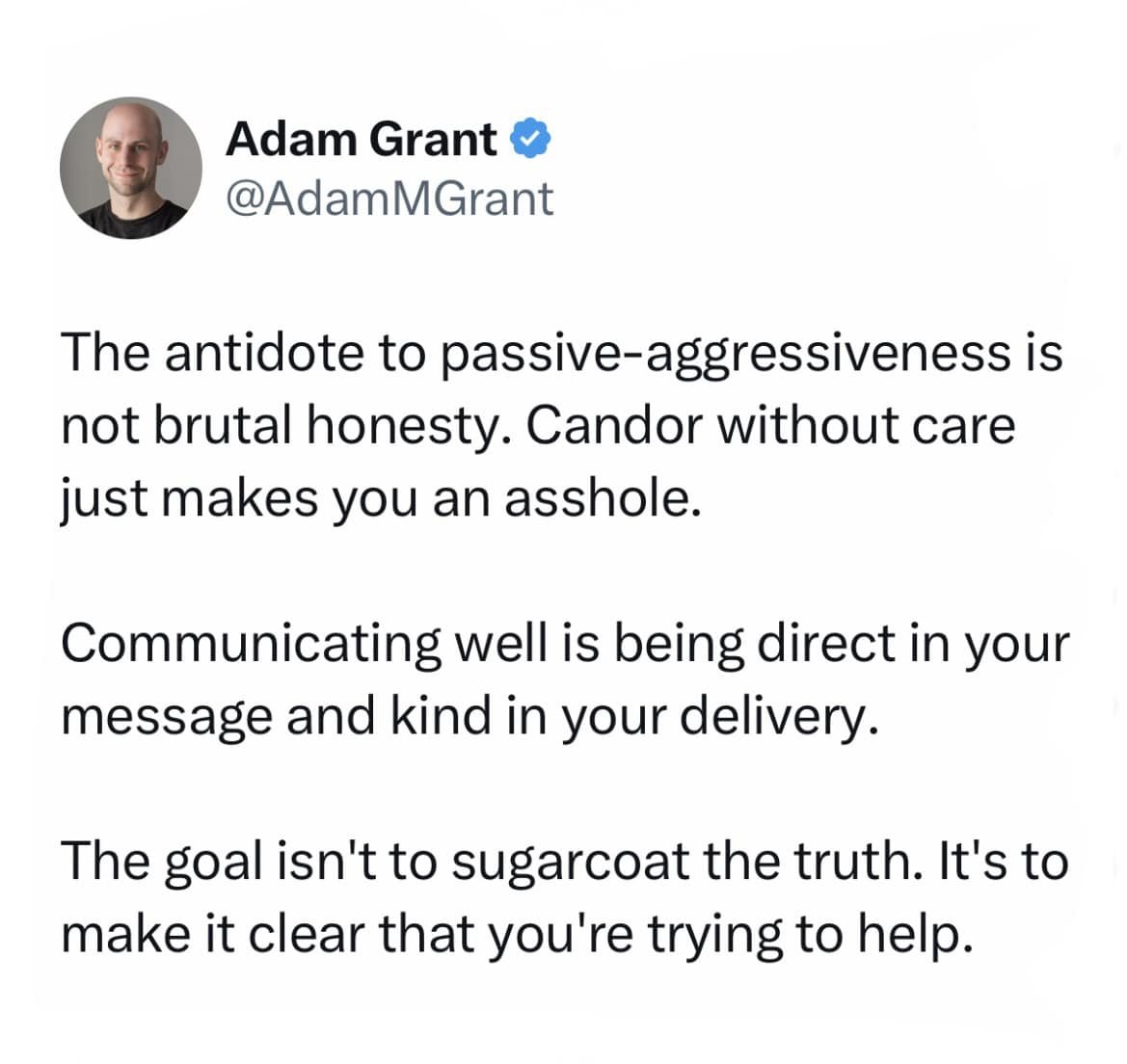Designing Feedback for Impact
Effective Feedback Requires Process & Positive Intention
Feedback is good. But not all feedback.
In every organization I’ve experienced, there has been a practice of providing employee performance feedback. Sometimes, that happens in structured and regular one-on-one conversations. Unfortunately, however, feedback often happens ad hoc, inconsistently, and only once a year at an annual review. Countless data show the importance of employee feedback in employee engagement and development. However, not all feedback is created equally.
I recently wrote a post about receiving feedback, the importance of committing to learning rather than knowing, and the importance of being thoughtful about receiving feedback. Check it out here.
It’s equally important to think about how we’re delivering feedback because while feedback in any package can be a gift, the wrapping absolutely makes a difference.
Prepping feedback for your next one-on-one, quarterly, or mid-year check-in? Consider the following to design your feedback to facilitate greater impact on behavioral change, performance, and engagement.
What NOT To Do
Have you ever met someone proud of their direct nature? A person who specifically celebrated that they were “brutally honest?” Let’s say it clearly, “if your feedback or honesty is brutal - you’re not doing it right.”
Brutal (adj.) - Suitable to one who lacks intelligence, sensitivity, or compassion.
Cruel, cold-blooded
Harsh, severe
Human-centered work—the kind that builds healthy, effective organizations through the development and nurturing of the people within them—leaves no room for brutality.
The worst (read: poorly delivered, unhelpful, and ineffective) feedback I ever received:
“You act like a yappy dog every time he is around”
This feedback came from a person with power who was positioned to inform my performance ratings and the quality & experience of my work. He was referring to the way I engaged with one of his peer leaders, both of whom I supported in my role. Through reflection & an effective subsequent professional development experience, I came to see the pieces of his insight were useful. But there is absolutely no doubt that he could have found a more effective way to help me develop my professional persona.
Brain-Safe Feedback Design
An important element in both giving and receiving feedback is psychological safety, a term made famous by the pioneering work of Amy Edmondson of Harvard Business School. Psychological safety is the belief that one won’t be punished or humiliated for speaking up or making mistakes. Poor feedback delivery is likely to trigger distress & fear in the receiver, which is counterproductive to the creation of psychologically safe work cultures.
To be clear: being referred to as a yappy dog was definitely humiliating – and it would take a whole other blog to get into the dynamics surrounding power and privilege given that he was a white man with power and I was an early-in-career woman of color without power.
To avoid the accidental impact of ego pain, defensiveness or… well, fight, flight, or freeze… prioritize thoughtful, candid, clear, kind, and conversational delivery using these behaviors:
Give them a heads-up (or get a micro-yes) : Great feedback givers let the person know feedback is coming by asking a short, but important question. It lets the other person know that feedback is about to be given. And the second thing it does is it creates a moment of buy-in.
“Can I share something I observed during your presentation?”
Be specific & objective. Don’t make inferences. “I noticed you do… xyz.” Rather than, “I interpreted xyz.” This should be something that could be caught with a camera. Observable.
“I noticed you said um after every word” not “you seemed to be at a loss for words”
When you share inferences, it makes it difficult to follow the thread of conversation, and the message is watered down or missed by listeners.
Share Impact : This tells the person about the effect of their behaviors or work on other people, the team, or the organization. It gets at “why” their behaviors either are or aren’t working.
End with Inquiry: This supports conversational feedback and creates commitment rather than compliance. Consider that you do not fully understand what’s behind the behavior or action. Better insight can help you to be more effective in coaching the desired behavior change.
“Can you help me understand how that happened?” “What might be some useful steps for us to take together to support your growth in this space?” Yay for joint problem-solving!
Consider my example from above, improved with a little thoughtful process & positive intention.
Leader: “Hey, I noticed something when you interacted that I’d like to share with you. Would that be okay?”
Courtney: “Sure.” And maybe, “Can you be kind? I’m feeling a little sensitive today!”
Leader: “Although you’re usually very measured and professional, I noticed that when he’s around, your voice goes up several octaves, and your physical demeanor shifts in a way that’s unusual”
Courtney: “Oh really? Thanks for sharing…” <insert pensive silence>
Leader: “Yeah, and unfortunately, when that happens, it’s harder to take what you’re saying seriously. I actually have observed how other people respond to that as well, and there has been a physical reaction to turning away from observing the two of you interacting. I wonder if, now that you know about this, we can come up with some strategies or steps to ensure you can be yourself around him. Would that be helpful?”
Courtney: “Very helpful. Thank you for sharing your observations respectfully”
Delivering effective feedback takes skill & finesse, and it will not always be easy or comfortable. Effective feedback can be respectfully uncomfortable without being damaging, offensive, or humiliating. The truth is, we’re probably not always going to get it right. But when you don’t, apologize and try, try again.
Author: Courtney Currie-Simmons
Need help with feedback in your organization? Reach out to learn more about our manager development solutions.

